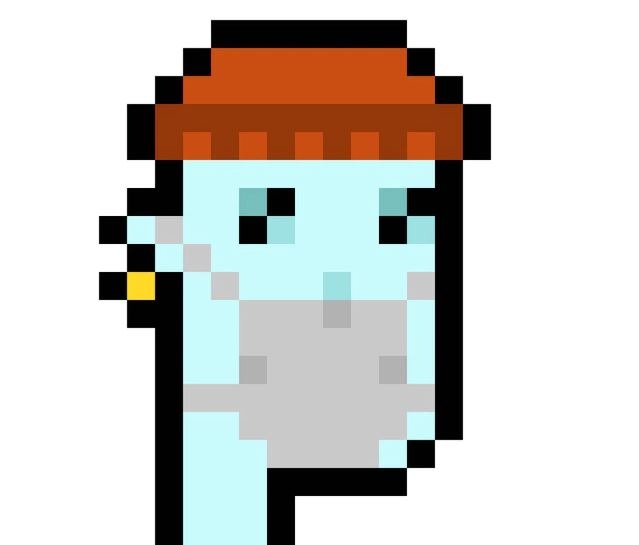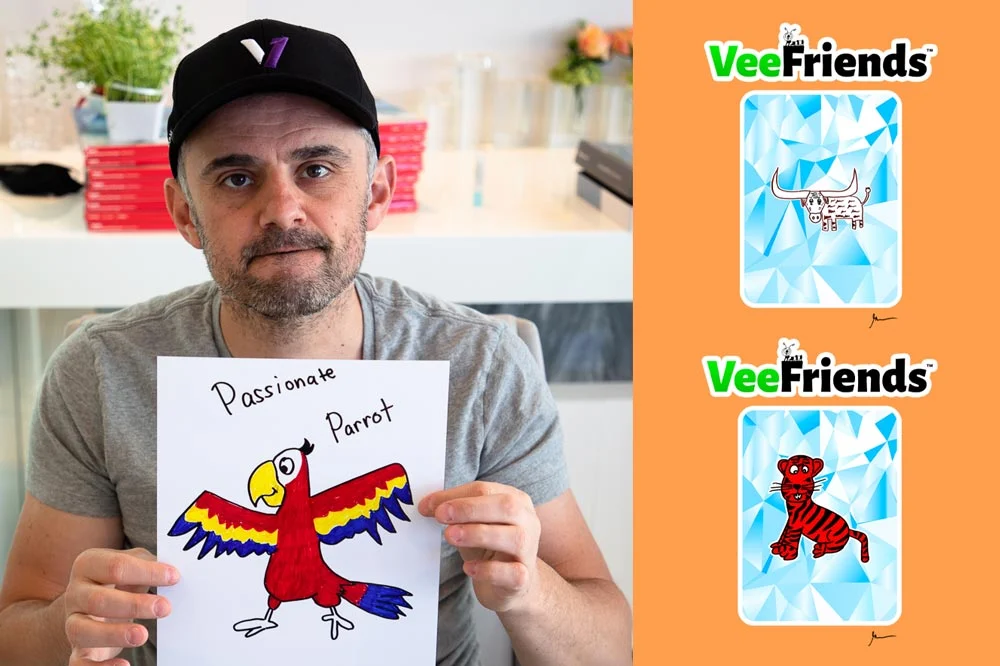With the growing adoption of cryptocurrencies (“crypto”), new markets are popping up and exploding with opportunity. The latest trend is to collect unique digital art files called “NFTs”, opening up revenue streams for digital artists and collectors alike.
Some of these NFTs have skyrocketed in value in just a few years, setting off a buying frenzy that is hard to fathom. For example, the “floor price” (cheapest) of a Bored Ape Yacht Club NFT currently sells for about $300,000 on OpenSea. As the entire Bored Ape collection contains about 10,000 computer-generated pieces, it has a market cap of well over $3 billion. For perspective, that’s roughly what the Miami Dolphins and LA Clippers sports franchises are worth. Several Crypto Punks have sold for between $5 and $12 million, and the digital artist known as “Beeple” has sold NFTs for as high as $30 million.

What is an NFT?
NFT stands for “non-fungible token”, which is just a technical way of saying it is a unique, one-of-a-kind digital file. No other copies of ownership exist, because the ownership history is recorded publicly on the blockchain. A blockchain is a network of computers that act as a public ledger to validate ownership of those assets. This ledger is “decentralized”, having no central authority, so the entire network validates its authenticity, making it nearly impossible to hack or manipulate.
By storing NFTs on a decentralized blockchain, artists and collectors can have confidence in its security and authenticity, and artists can now publish their work online with less fear of being copied or ripped off.
A “fungible token” (FT) by contrast can be replicated, even if limited in supply. Bitcoins, for example, are fungible and not unique, allowing many interchangeable bitcoins throughout the market.
Getting Started
To purchase an NFT:
- Identify the NFT you wish to purchase from an NFT marketplace or direct
- Note the coin the NFT runs on (such as Ethereum or Cardano), its price and the cost for gas fees, which may be volatile
- Purchase the necessary coin amount by using an “exchange” to trade money from a bank account into crypto
- Save the crypto to a wallet after you have set one up
- Purchase the NFT from the marketplace using your wallet’s address to exchange assets
Exchanges often support a wide variety of coins, but marketplaces and wallets tend to be specific to particular coins.
Where To Purchase NFTs
There are many popular marketplaces to purchase or auction NFTs including OpenSea, Rarible, Nifty Gateway, SuperRare, Foundation and KnownOrigin.
You can also purchase NFTs more directly by researching NFT projects on Discord and Twitter, and get in on them right when they “drop”. Getting in on a good project early offers the highest level of risk and success.
OpenSea has emerged as the early leader in NFT marketplaces, due to its stats on rarity and other details that help make informed purchases. However, it has been mired in its own controversy lately, as hackers exploited a loophole to purchase expensive NFT at ridiculously low prices and some people are plagiarizing artwork for gain on their platform.
Once you have located the item to purchase, you should be able to see the coin type and gas fees and know how much of that coin you will need to purchase your desired NFT.

Ethereum Gas Fees
Most NFTs have notoriously expensive “gas fees” (transaction costs) due to being “minted” on an expensive network like Ethereum. This is a big problem with buying on OpenSea. You might end up spending $150 in transaction costs just to purchase a $100 NFT! This creates a significant barrier to entry for artists wanting to get started.
Other blockchains including Solana and Cardano have begun creating smart contract capabilities for NFT, but at a fraction of the cost. I expect to see a big shift away from Ethereum for NFT as a result of the exorbitant gas fees. Newer marketplaces such as Solanart, Solsea, and Polygon and Tokhun have been built on more affordable blockchains. Polygon is still built on Ethereum, but has lower gas fees due to being built on Layer Two.
Our parent company, dodl.es, is also working to create our own minting process in order to help artists affordably get their NFTs minted on the Cardano blockchain.
Buying Coins From An Exchange
After you know how much of which type of coin you need to cover the cost of your NFT and any gas fees, you must find an exchange to purchase or trade for those coins.
Setting up an account on an exchange is one of the more cumbersome tasks, taking 15-30 minutes, as these exchanges walk you through a number of security issues including scanning id car, taking your photo, selecting password and passphrase, and phone and email validation. Look for an exchange like Coinbase that has low transaction fees, easy interface and large variety of coins.
Other popular exchanges to consider are Binance, Crypto.com, Kraken and Gemini.
Choosing Wallets
Storing your coins and NFTs on your exchange is not really ideal as it kind of defeats the protections of the blockchains by remaining centralized, and these accounts are not likely to offer the same flexibility and perks and security as wallets.
You can think of a wallet as an online bank account to store NFTs and coins. These wallets are tied to specific coin types, so you will find yourself acquiring a few wallets as usage increases. Some wallets like Meta Mask and Coinbase Wallet support multiple types of coins. Wallets can be downloaded as a browser extensions, mobile apps or even a physical hard drive that you can disconnect.
The most popular NFT wallet right now is Meta Mask, as it works through your browser and easily connects to popular NFT marketplaces and Metaverse websites. Exodus supports a number of NFT types such as Cardano and Math Wallet is also popular and versatile, and Coinbase also has a wallet now.
If you want to invest in cryptocurrencies, pay attention to the interest yields and staking benefits of particular coins and wallets. For example, you can get interest payments that compound every few days based on 7.5% interest plus staking yields of another 12.5% for major coins at StakeCube.net.
Beware of phishing scams. Don’t just connect your wallet to any website. Some websites will entice you with offers for free NFT, but there are scammers that have been shown to steal NFTs by accessing your wallet.
Why NFT?
At first glance, there is not much “utility” (purpose) in NFTs aside from personal collection. Social media sites have begun allowing NFTs to be registered as your unique personal profile. Basically, the initial purpose seems for wealthy people to flex with some level of social cache.
Gary Vee, an avid collector of sports memorabilia, jumped on the trend early as an NFT pioneer by making “Vee Friends”. I wouldn’t exactly call these works of fine art; perhaps more like your child’s kindergarten art that you are obligated to hang on your kitchen wall. Still, with his celebrity endorsement behind it, and creating utility as digital passes to his events, Vee Friends boomed and now sell for $40,000 and up.

With Web 3.0 and the Metaverse just around the corner, the increasing utility for NFT is becoming more clear. There is a level of social status in the Metaverse that mimics social status in the real world. Kids have already been paying money to customize their avatars and properties, gaining social clout amongst friends and their communities in this new virtual universe. NFTs offer unique status symbols to represent themselves that they are increasingly willing to pay for.
"What you're going to see is people caring about the blue check on Instagram, or skins on Fortnight, or those Madden tokens. That is about to hit every part of our life."
Gary "Vee" Vaynerchuk
Another purpose of NFT is simply supporting the projects and artists you love. Patreon, Kickstarter, IndieGoGo and GoFundMe have given rise to communities of donors who support projects and content creators that they wish to succeed. NFTs offer them virtual rewards for their support, and the opportunity to turn those donations into profitable collections by backing the right people and projects.
Selecting An NFT
Because each NFT is unique, a level of “rarity” is already introduced, giving it perceived collectible value based on a number of factors such as the rarity of particular design features, artwork quality, personal taste, age of work, artist popularity and track record, celebrity endorsement, utility and social purpose. This contrived uniqueness may seem hard to grasp, as we know that any data file can be easily replicated. However, by definition, an NFT file can only “belong” to a single owner on the blockchain, so in that sense, the file is unique and not duplicable.
The booming nature of this NFT craze means that many are attracted to jump in and make a quick buck, known as a “cash grab”. Unfortunately, many are grabbing the fast cash and leaving their communities hanging in what is being called a “rug pull”. Try to search for projects by people with a track record that seems trustworthy. You should seek people who are investing in this space and not just those who are jumping in for a quick buck, as the market is likely to sour on their work.
Where Can I Learn More?
Beyond personal taste, you can research upcoming NFTs by joining various NFT communities on Discord and Facebook such as Furu’s Mint Club, or just follow trending NFT hashtags on Twitter. If you are looking to create your own NFT community to promote your work, you should definitely start with a Discord channel to build your community.
My favorite podcasts to learn about NFT trends are NFT For Newbies, GaryVee and Bitboy.
The following video is a pretty helpful step-by-guide for purchasing Ethereum on an exchange, setting up a Meta Mask wallet and then purchasing an NFT from OpenSea.





About the wallets. If you use a personal custody wallet like metaMask there’s no banking style verification. Thats only necessary if you use an exchange or DeFi system that provides a fiat to crypto gateway. I’m not sure you can hold NFT’s in a CoinBase wallet, and if you can I’m not sure you would want to.
Coinbase wallets do support NFT.
Polygon is built on Ethereum and is subject gas fees.
From what I’ve found, Polygon has very low fees, as it is Layer Two.
https://www.youtube.com/watch?v=00zWpR-1gaI
Which platform is the best for selling NFTs as an artist?
Great question.
I would first consider the blockchain coin to store the NFT on and second the marketplace to buy and sell them.
For the coin selection, you must weigh the transaction cost (gas) vs the popularity of the coin. Ethereum was the early mover in NFT and therefore is the most established blockchain for NFT, so it’s the “safe” way to go to launch a premium NFT collection, if you are working on a project that has some promotional hype and financial backing. You pay a very high premium, but are expecting a massive payoff.
On the extreme flipside, I’ve seen apps claiming to offer NFTs but are really just storing it on their servers. These likely aren’t blockchains and even if they are, their network is so small, it creates a high risk for the NFTs to be unable to be bought and sold or traded with wallets easily, and maybe even a serious risk for the network to disappear altogether, which would make everything worthless. If nobody can download the NFT into their wallet, it will also make it worthless, so you need to choose an established coin like ethereum, cardano, solana, dogecoin or bitcoin.
However, the incredibly high gas fees of ethereum mean that it will only be a matter of time before the community moves away from Ethereum to other coins. So, for most NFT projects going forward, I would recommend Cardano, Solana, Ethereum Layer 2, Polygon or something similar with low gas fees and a strong coin market cap.
Each marketplace is pretty tied to one particular coin. OpenSea is the most popular overall and deals in Ethereum and the cheaper Ethereum Layer 2. But there are a number of Cardano and Solana marketplaces popping up as well. The good news is once you’ve chosen a coin, you can always change different marketplaces that support your chosen coin.